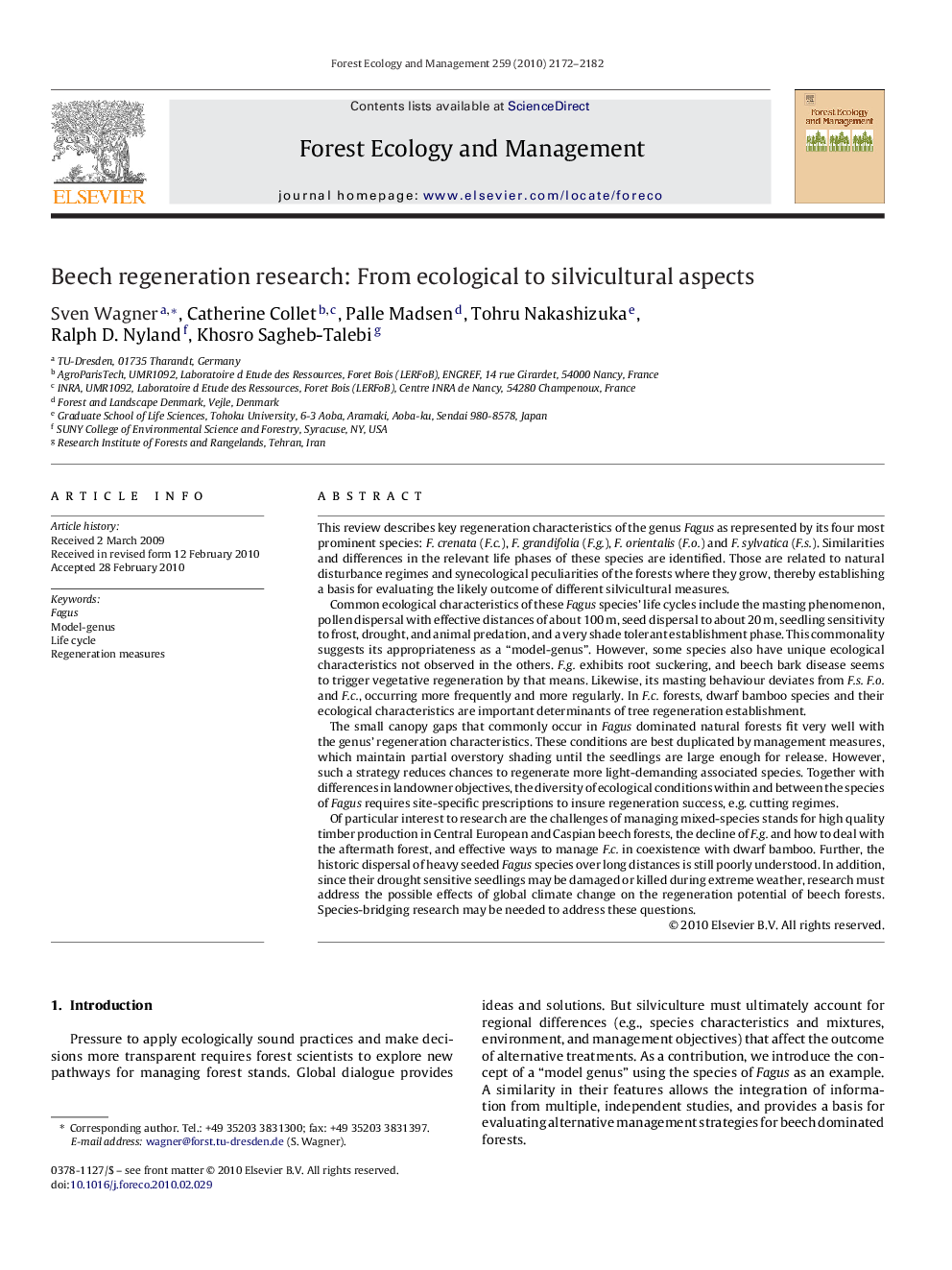| کد مقاله | کد نشریه | سال انتشار | مقاله انگلیسی | نسخه تمام متن |
|---|---|---|---|---|
| 88289 | 159296 | 2010 | 11 صفحه PDF | دانلود رایگان |

This review describes key regeneration characteristics of the genus Fagus as represented by its four most prominent species: F. crenata (F.c.), F. grandifolia (F.g.), F. orientalis (F.o.) and F. sylvatica (F.s.). Similarities and differences in the relevant life phases of these species are identified. Those are related to natural disturbance regimes and synecological peculiarities of the forests where they grow, thereby establishing a basis for evaluating the likely outcome of different silvicultural measures.Common ecological characteristics of these Fagus species’ life cycles include the masting phenomenon, pollen dispersal with effective distances of about 100 m, seed dispersal to about 20 m, seedling sensitivity to frost, drought, and animal predation, and a very shade tolerant establishment phase. This commonality suggests its appropriateness as a “model-genus”. However, some species also have unique ecological characteristics not observed in the others. F.g. exhibits root suckering, and beech bark disease seems to trigger vegetative regeneration by that means. Likewise, its masting behaviour deviates from F.s.F.o. and F.c., occurring more frequently and more regularly. In F.c. forests, dwarf bamboo species and their ecological characteristics are important determinants of tree regeneration establishment.The small canopy gaps that commonly occur in Fagus dominated natural forests fit very well with the genus’ regeneration characteristics. These conditions are best duplicated by management measures, which maintain partial overstory shading until the seedlings are large enough for release. However, such a strategy reduces chances to regenerate more light-demanding associated species. Together with differences in landowner objectives, the diversity of ecological conditions within and between the species of Fagus requires site-specific prescriptions to insure regeneration success, e.g. cutting regimes.Of particular interest to research are the challenges of managing mixed-species stands for high quality timber production in Central European and Caspian beech forests, the decline of F.g. and how to deal with the aftermath forest, and effective ways to manage F.c. in coexistence with dwarf bamboo. Further, the historic dispersal of heavy seeded Fagus species over long distances is still poorly understood. In addition, since their drought sensitive seedlings may be damaged or killed during extreme weather, research must address the possible effects of global climate change on the regeneration potential of beech forests. Species-bridging research may be needed to address these questions.
Journal: Forest Ecology and Management - Volume 259, Issue 11, 15 May 2010, Pages 2172–2182